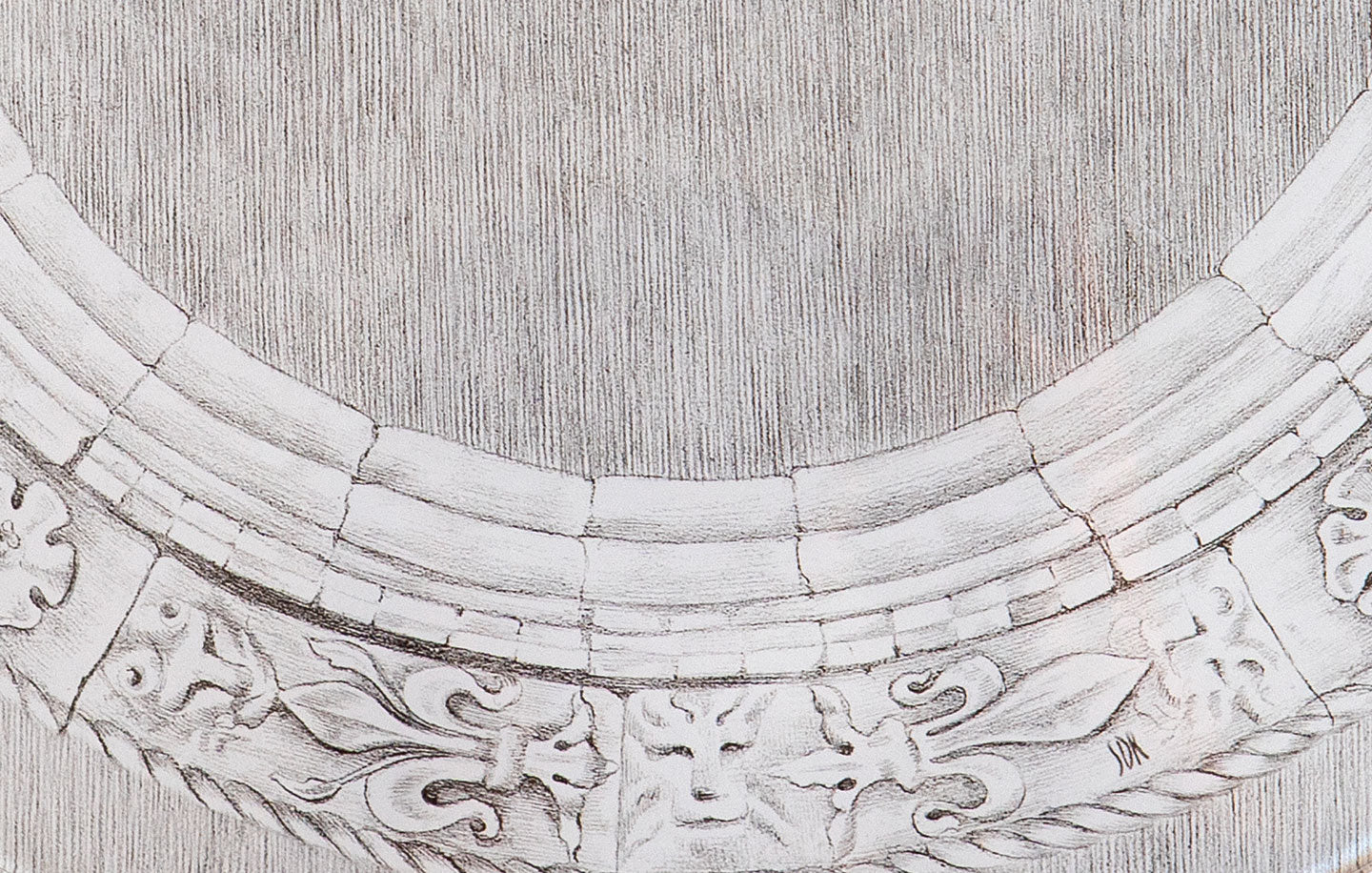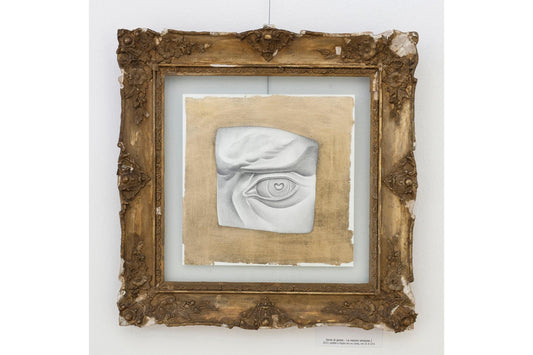In a previous article (that you can read by clicking here), I told you how to use the gold leaf.
Now I’ll tell you about the:
Rigatino
But what is rigatino?It is a technique by Restorers for the pictorial retouching phase of the restoration of a painting or a fresco.
During the retouching operations, the restorers try to fill the holes in the painting with tiny dashes of color, made to imitate the artwork’s colors.
In practice, this technique consists of vertical hatching used to fill in those empty or damaged spaces of the frescoes or paintings that need to be restored.
From this multitude of small lines that the restorer makes comes the name “rigatino” (jargon used by professionals that comes from the Italian word “righe” i.e. stripes/lines).
But why is there a need to fill these empty spaces (caused by neglect or by the simple decay of the artwork due to the passage of time) in a different way from the artist’s original technique?
Why the rigatino is used in restoration?
The answer to this question comes from a restoration rule: everything that the restorer adds to the artwork must be recognizable to the observer.In this way, the observer will be able to immediately identify and distinguish the portion of the original work from the restored one (obviously getting close enough to see the difference that, from a distance, is practically imperceptible).
Therefore this technique respects the principle according to which every restoration must always be recognizable.
It must not “mimic” the artist’s brushstroke… On the contrary!
In fact, at a close distance, the observer must always distinguish the restorer’s work from the artist’s hand.
The way the technicians achieve this effect is thanks to a grid consisting not of a single color but of many layers of different shades that, superimposed on each other, come as close as possible to the original color.
This will allow you to enjoy the work without the annoying gaps caused by the passage of time or neglect.
My personal meditation technique
You might think that is something that makes you cross your eyes…And you would be right; this is definitely a painstaking work of patience and concentration.
However, in my case, the rigatino does not fill spaces damaged by neglect or damaged by time…
In fact, I use this technique with a completely different premise than that of retouching.
My rigatino is done in pencil and does not act as a “patch” to repair something damaged but, together with the golden decorations, it constitutes the real body of many of my drawings’ backgrounds.

Stroke after stroke, sign after sign, the hand moves with an automatism, with a familiarity that makes the whole procedure an operation that reconciles me with myself.
Therefore, a restoration technique originally thought to “patch up” ancient paintings becomes the protagonist in my drawings, in all its intricate and splendid repetitiveness.
And, with this, I think I have told you everything about this fascinating restoration technique that I personally use with a completely different purpose than its original one.
Now I’d better go back to sharpening the pencils. See you soon!




